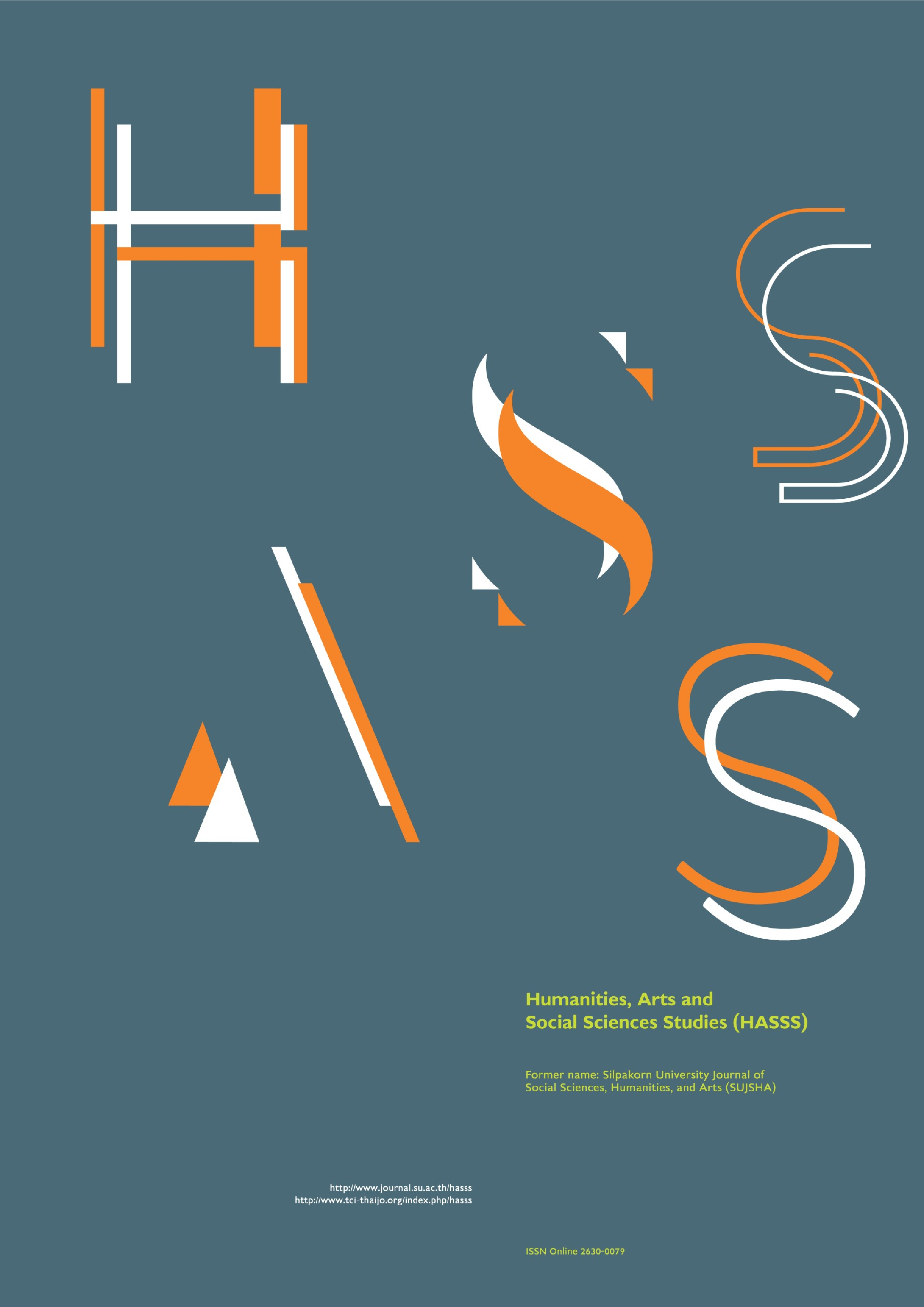Information needs of local and non-local museum visitors: A study at the museum of tomb murals of the Tang dynasty in China
Main Article Content
Abstract
The murals of the Tang dynasty offer invaluable insights into the cultural information of that society by serving as critical cultural artifacts for understanding its social, historical, and cultural development. Given the limitations of mural preservation in museum exhibition environments, the Shaanxi History Museum in China aims to address the diverse information needs of both local and non-local visitors through effective design. As such, this study specifically focuses on the information design of the Museum of Tomb Murals of the Tang Dynasty at the Shaanxi History Museum. To examine the differences in information requirements between local and non-local visitors, researchers gathered data through interviews and questionnaires with experts and museumgoers, and on-the-spot observations. The goal was to identify and analyze effective methods to enhance visitors' understanding and appreciation of the murals. The study highlights that meeting the experience needs of these visitors influenced their engagement with the information presented. This insight can guide the design of museum exhibitions, the space environment, and the efficiency of media and equipment services to ensure a meaningful and fulfilling visitor experience. In conclusion, this paper contributes valuable insights into aligning the museum's information design with the specific information needs of its diverse audience. By catering to the preferences and expectations of local and non-local visitors, the museum can enhance its information design and overall visitor experience, enriching the exploration of Tang dynasty murals and cultural history.
Downloads
Article Details

This work is licensed under a Creative Commons Attribution-NonCommercial-NoDerivatives 4.0 International License.
All rights reserved. Apart from citations for the purposes of research, private study, or criticism and review,no part of this publication may be reproduced, stored or transmitted in any other form without prior written permission by the publisher.
References
Alelis, G., Bobrowicz, A., & Ang, C. S. (2013). Exhibiting emotion: Capturing visitors’ emotional responses to museum artefacts. In A. Marcus (Ed.), Design, user experience, and usability: User experience in novel technological environments (pp. 429–438). Springer. https://doi.org/10.1007/978-3-642-39238-2_47
Carroll, J. M. (1997). Human-computer interaction: Psychology as a science of design. Annual Review of Psychology, 48(1), 61–83. https://doi.org/10.1146/annurev.psych.48.1.61
Davis, J., & Stack, M. (1997). The digital advantage. In J. Davis, T. Hirschl, & M. Stack (Eds.), Cutting edge: Technology, information capitalism and social revolution (pp. 121–144). Verso.
Dean, D. (2002). Museum exhibition: Theory and practice. Routledge.
Falk, J. H., & Heng, W. (2020). Museum audience studies: Past, present and future. Southeast Culture, (1), 145–156. http://dnwh.njmuseum.com/articleDetail/6049 [in Chinese]
Guo, J. (2021). Tang dai mu shi bi hua de shu zi hua shi jue zhuan xiang tan jiu [Research on the digital visual turn of tomb murals in the Tang Dynasty]. Popular Literature, 66(17), 40–41. [in Chinese]
International Council of Museums. (2022). Museum Definition. https://icom.museum/en/resources/standards-guidelines/museum-definition/
Jingbo, W. (2019). Shu zi mei ti jie ru xia de bow u guan qing jing she ji yan jiu [Research on museum situation design under digital media intervention]. Capital Normal University Press. [in Chinese]
Johnson, L., Adams Becker, S., Cummins, M., Estrada, V., Freeman, A., & Ludgate, H. (2013). NMC Horizon Report: 2013 Higher Education Edition. The New Media Consortium.
Kotler, N., & Kotler, P. (2007). Can museums be all things to all people?: Missions, goals, and marketing’s role. In R. Sandell & R. R. Janes (Eds.), Museum management and marketing (pp. 313–330). Routledge.
Macdonald, S. (2007). Interconnecting: Museum visiting and exhibition design. International Journal of CoCreation in Design and the Arts, 3(sup1), 149–162. https://doi.org/10.1080/15710880701311502
Mckay, A. (2007). Affective communication: Towards the personalisation of a museum exhibition. International Journal of CoCreation in Design and the Arts, 3(sup1), 163–173. https://doi.org/10.1080/15710880701333183
Peilin, C. (2019). Research on design strategy of museum service system [Unpublished master’s thesis]. Hefei University of Technology. [in Chinese]
Perry, S., Roussou, M., Economou, M., Young, H., & Pujol, L. (2017, October 31–November 4). Moving beyond the virtual museum: Engaging visitors emotionally [Paper presentation]. 23rd International Conference on Virtual System & Multimedia (VSMM), Dublin, Ireland. https://doi.org/10.1109/vsmm.2017.8346276
Qiu, Y. (2015). Tan jiu ti yan tuo xin bo wu guan jiao yu fan shi de shi dai zhuan xiang [Exploration, experience and innovation — The era turn of museum education paradigm]. China Museum, 32(1), 12–17. [in Chinese]
Tian, T., & Zijun, Z. (2017). Wo guo she jiao mei ti de xian Zhuang fa zhan yu qu shi [The current situation, development and trend of social media in my country]. Editorial Friend, 2017(1), 20–25. https://doi.org/10.13786/j.cnki.cn14-1066/g2.2017.01.003 [in Chinese]
Wanzhen, L. (2011). Bo wu guan guan zhong yan jiu [Museum Audience Research]. Sanmin Book Co., Ltd. [in Chinese]
Wenzhen, J. (2018). Shu zi mei ti ji shu zai bo wu guan zhan chen she ji zhong de chuang xin ying yong [Innovative application of digital media technology in museum exhibition design]. Research on Heritages and Preservation, 3(4), 97–99. https://doi.org/10.19490/j.cnki.issn2096-0913.2018.04.020 [in Chinese]
Xiangyang, X. (2015). Jiao hu she ji cong wu li luo ji dao xing wei luo ji [Interaction design: From logic of things to logic of behaviors]. Decorate, 58(1), 58–62. https://doi.org/10.16272/j.cnki.cn11-1392/j.2015.01.012 [in Chinese]
Xiaomei, H. (2014). Xin xi ke shi hua she ji yu gong gong xing wei yan jiu [Information visualization design and public behavior research] [Unpublished Doctoral dissertation]. Central Academy of Fine Arts. [in Chinese]
Xingming, L. (2005). Tang dai mu shi bi hua yan jiu [A study of Tang tomb murals]. Shaanxi People's Fine Arts Publishing. [in Chinese]


